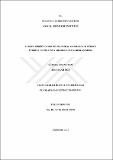Please use this identifier to cite or link to this item:
http://hdl.handle.net/11547/2216Full metadata record
| DC Field | Value | Language |
|---|---|---|
| dc.contributor.author | Öğe, Abdullah | - |
| dc.date.accessioned | 2019-05-27T06:30:58Z | - |
| dc.date.available | 2019-05-27T06:30:58Z | - |
| dc.date.issued | 2017 | - |
| dc.identifier.uri | http://hdl.handle.net/11547/2216 | - |
| dc.description.abstract | Türkiye’nin Avrupa Birliği müzakereleri uzun yıllardır sürekli konuşulan ancak bir türlü neticeye bağlanamayan tam anlamıyla bir muammadır. Türkiye, sürekli Avrupa Birliği’ne üyeliği kabul edilen ülkelerle kıyaslanmış, eksikleri tamamlanmaya çalışılmış ancak bir türlü tam üyeliğe geçiş gerçekleşmemiştir. Bu çalışmada 2004 yılında tam üyeliğe kabul edilen Polonya ile üyelik müzakereleri hala devam eden Türkiye’nin ekonomik yapısı kıyaslanacaktır. Bu iki ülkenin ekonomik yapıları incelenirken Avrupa Birliği’nin ekonomik kriterleri içerisinde değerlendirdiği makro ekonomik göstergeler kıyaslanacaktır. Söz konusu bu göstergeler; Enflasyon Oranı, İstihdam Oranı, İhracat Oranı, GSMH büyüme oranı, Kişi başına düşen GSMH büyüme oranı, İthalat Oranı, Yurtdışından net gelir, Döviz Kuru, İşsizlik Oranıdır. Ayrıca ikinci aşama olarak bu iki ülkenin ekonomisini kıyaslamak amacıyla kümeleme analizi yapılacaktır. Kümeleme analizinde benzer değişkenler kullanılırken, 2004 yılından bu yana Avrupa Birliği’ne tam üyeliğe kabul edilen 11 ülke ve hala müzakere aşaması devam eden ve üyeliğe kabul edilmeyen 5 ülkenin verileri kullanılacaktır. Söz konusu bu ülkeler; Polonya, Çek Cumhuriyeti, Estonya, Letonya, Litvanya, Malta, Macaristan, Slovenya, Slovakya, Bulgaristan, Romanya, Hırvatistan, Türkiye, Sırbistan, Karadağ, Makedonya ve Arnavutluk’tur. 1980-2015 dönemi için 17 ülkeye ait 9 makro ekonomik değişken kullanılarak, SPSS ortamında kümeleme analizi gerçekleştirilecektir. Kümeleme analizi sonucunda söz konusu bu 17 ülkenin ekonomik açıdan birbirlerine olan benzerliği değerlendirilmiş olup,belirlenen dönemlere veseçilen 9 makro ekonomik değişkenlere ait veriler ile yapılan analizlere baktığımızda Türkiye ekonomisi ve Polonya ekonomisi kısmen benzerlik göstermektedir. 1980-2004 dönemi hariç yani 2004 yılı sonrası dönemlerde Türkiye ekonomisinde meydana gelen olumlu değişimler sonucunda Türkiye ve Polonya benzer kümelerde çıkmıştır. Yapılan bu çalışmayı genel olarak değerlendirdiğimizde, Türkiye ve Polonya’nın ekonomik durumlarının kısmı olarak da olsa benzerlik gösterdiği sonucu elde edilmiştir. Ayrıca ilgili dönemde AB’ye tam üyeliğe kabul edilen devletler ile de Türkiye’nin benzer ekonomik yapıya sahip olduğu da gözlemlenmiştir. | tr_TR |
| dc.language.iso | tr | tr_TR |
| dc.publisher | İSTANBUL AYDIN ÜNİVERSİTESİ SOSYAL BİLİMLERİ ENSTİTÜSÜ | tr_TR |
| dc.subject | Avrupa Birliği (AB) Ekonomi Kriterleri | tr_TR |
| dc.subject | Polonya | tr_TR |
| dc.subject | Türkiye | tr_TR |
| dc.subject | Kümeleme Analizi | tr_TR |
| dc.subject | European Union (EU) Economic Criteria | tr_TR |
| dc.subject | Poland | tr_TR |
| dc.subject | Turkey | tr_TR |
| dc.subject | ClusterAnalyst | tr_TR |
| dc.title | AVRUPA BİRLİĞİ EKONOMİ POLİTİKALARINDA UYUM SÜRECİ: TÜRKİYE VE POLONYA ARASINDA BİR KARŞILAŞTIRMA | tr_TR |
| dc.type | Thesis | tr_TR |
| dc.description.abstractol | Turkey's European Union negotiations have been spoken for a long time, but it is still an open-ended problem. Turkey has always been compared with the countries that had been accepted as members of the European Union and although the deficiencies have been tried to complete, the transition to the full membership has not taken place. This study will compare the structure of Turkey, whose membership negotiations are still on going, with the economic structure of Poland, which was accepted as a full member in 2004. While examining the economic structures of these two countries, the macroeconomic indicators that European Union considers within the economic criteria will be compared. These indicators in question are inflation rate, employment rate, export rate, GNP growth rate, GDP per capita growth rate, import ratio, net income from abroad, exchange rate, unemployment rate. In addition, as a second step, clustering analysis will be conducted to compare the economies of these two countries. While similar variables are used in the cluster analysis, the data belonging to 11 countries which were accepted as full members of the European Union since 2004 and the data of 5 countries which are still in the negotiation phase will be used. These countries are Poland, Czech Republic, Estonia, Latvia, Lithuania, Malta, Hungary, Slovenia, Slovakia, Bulgaria, Romania, Croatia, Turkey, Serbia, Montenegro, Macedonia and Albania. Clustering analysis will be performed in SPSS program by using 9 macroeconomic variables belonging to 17 countries for 1980-2015 period. At the end of the clustering analysis, the similarity of these 17 countries will be assessed in terms of economics.When we look at the analyzes of the given periods, the Turkish economy and the Poland economy are partly similar.Except for the period of 1980-2004, that is, as a result of positive changes in the Turkish economy after years 2004, Turkey and Poland have emerged in similar clusters.When we evaluate this work in general, we have obtained the result that Turkey and Poland show similarity in part of their economic situation. It has also been observed that the countries with the full membership of the EU in the period concerned have a similar economic structure with Turkey. | tr_TR |
| dc.publisher.firstpagenumber | 1 | tr_TR |
| dc.publisher.lastpagenumber | 58 | tr_TR |
| Appears in Collections: | Tezler -- Thesis | |
Files in This Item:
| File | Description | Size | Format | |
|---|---|---|---|---|
| 481866.pdf | 1.56 MB | Adobe PDF |  View/Open |
Items in DSpace are protected by copyright, with all rights reserved, unless otherwise indicated.
